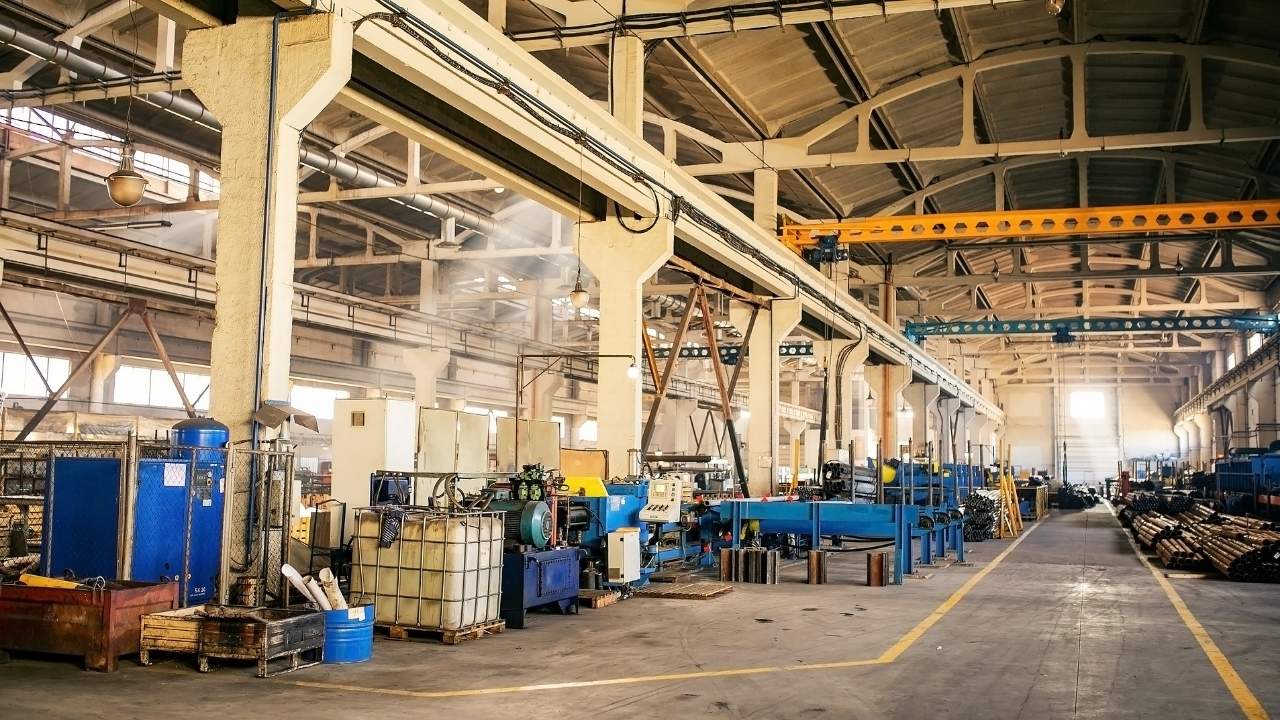Unlock efficiency and cost savings with automated inventory reordering. Learn how to streamline your operations, prevent stockouts, and boost your bottom line.
Introduction
The critical role of inventory management in business success
Managing inventory effectively is vital for the success of any business that depends on the sale of products. It impacts everything from meeting customer demand to maintaining optimal profit margins. Flawed inventory management can lead to stockouts and lost sales or excess stock and increased carrying costs. Therefore, implementing efficient inventory control processes is essential.
The transformative power of automated reordering processes
Technology now allows businesses to automate critical parts of inventory management, including reordering. Automated reorder processes leverage data and algorithms to determine optimal reorder points and quantities. This removes the guesswork and provides unmatched efficiency. Studies show companies that leverage automated reordering see significant improvements in key inventory metrics. It is a transformative advancement for supply chain operations.
Objectives and key takeaways of the article
This article will provide readers with a comprehensive guide to mastering automated reorder processes. It will cover fundamentals like definitions and comparisons to manual processes. Readers will learn the components of automated systems. The benefits will be explored in depth, including efficiency gains, cost savings, accuracy improvements, and enhanced customer service. Real-world examples will showcase the power of automated reorder technology across retail, distribution, manufacturing, and other industries. Readers will be better equipped to evaluate, select, and optimize automated inventory reorder processes.
Understanding the Fundamentals of Automated Reordering
Definition and core concepts
Automated reordering leverages data and software algorithms to manage replenishment orders. It involves configuring reorder points and economic order quantities.
- Reorder points trigger orders to replenish stock when inventory levels fall to predetermined thresholds
- And, Economic order quantity formulas calculate optimal reorder amounts.
Together, these provide timely, cost-efficient reorder generation with no human intervention needed. Automated ordering links inventory data with supply chain software and ERP platforms to transform inventory management.
Comparison with traditional manual reordering methods
Manual reordering relies on human employees visually monitoring or analyzing reports to determine when and how much to reorder. This introduces significant inefficiencies and the risk of human error. Workers must constantly check stock levels across products and locations. They must then calculate reorder quantities and times without the benefit of advanced data analytics. This diverts workers’ time and focus.
Automated reordering eliminates this manual work by using real-time inventory data and parameters configured into systems. The latest IoT and barcode scanning technologies feed into ordering algorithms. This enables companies to leverage powerful data and computing capabilities with little human involvement. It allows workers to focus on more strategic tasks.
Key components of an automated reordering system
- Real-time inventory monitoring – Leverages barcode scanning, sensors, and other tracking methods
- Reorder rules and parameters – Optimized reorder points and order quantities configured per product/location
- Inventory analysis and forecasting – Enables continual optimization of reorder parameters
- Integration with order generation and supply chain platforms – Seamlessly triggers orders and communicates with partners
- Exception alerts and reporting – Notifies managers of issues requiring intervention
Unlocking the Benefits of Automated Reordering
Maximizing efficiency and productivity
- Eliminating time-consuming manual tasks
Automated reordering eliminates the hours of manual work traditionally required to monitor inventories and calculate reorder quantities. Instead of visually checking stock levels, the system tracks them in real time. No worker has to synthesize reports and determine ordering needs. The software runs optimized algorithms as soon as stocks hit configured levels.
- Streamlining the end-to-end ordering process
The automated process also streamlines the steps beyond determining need. It seamlessly sends reorder data to supply chain partners to fulfill. This removes lag and delays in the process. Studies show automated reordering can reduce cycle times by over 30%. This keeps partners efficient as well.
Driving cost savings and profitability
- Optimizing stock levels to reduce carrying costs
Automated systems collect data over time and run analytical optimization to ideal stock levels and reorder parameters. This minimizes both excess stock that incurs unnecessary carrying costs and the risk of shortages leading to missed revenue. Companies have used automated reordering to achieve 20%+ reductions in inventory costs.
- Minimizing stockouts and lost sales opportunities
The automated process initiates orders at the precise reorder point configured. This ensures stock is replenished before hitting zero. The algorithms also determine and execute optimal reorder quantities. Companies using automated reordering reduce stockouts by over 40% on average.
Enhancing accuracy and data integrity
- Leveraging real-time data synchronization
Automated reordering relies on continual data feeds from sensors, scanners, and other tracking technology. This provides real-time visibility. There is no reliance on human-performed counts or manual data entry that quickly becomes outdated. Real-time data drives the reorder algorithms leading to precise optimization.
- Eliminating human error and inconsistencies
Even the best supply chain managers make mistakes in data analysis that lead to poor reorder decisions. No human can match the precise, consistent logic of optimized algorithms powered by real-time data at scale. Automated reordering reduces error rates to near zero which flows through the rest of the inventory operations.
Improving customer satisfaction and loyalty
- Ensuring product availability and timely fulfillment
Customers expect consistent availability of the products they want to purchase when they want them. Stockouts from poor inventory management lead to negative experiences and damage hard-won loyalty. Automated reordering provides nearly 100% availability leading to higher customer satisfaction scores.
- Adapting quickly to changing customer demands
The connected data capabilities of automated ordering systems allow companies to identify changes in product demand faster than ever. The reorder algorithms instantly adapt ensuring high-velocity products stay in stock. This supply chain agility delights customers by aligning inventories to their evolving needs.
Harnessing the Power of Cloud-Based Inventory Control Systems
A. The advantages of cloud-based solutions over traditional on-premise systems
Automated reorder technology provides even greater performance and flexibility when deployed as cloud-based solutions instead of legacy on-premise systems. Cloud inventory management centralizes data in real-time across the enterprise. And it enables advanced machine learning unmatched by on-premise.
B. Seamless integration with existing ERP and supply chain management platforms
Leading cloud platforms provide pre-built integrations to major ERP and supply chain environments. This makes rollout fast and efficient. It also ensures automated reorder processes synchronize across systems enabling seamless execution.
C. Scalability, accessibility, and real-time collaboration benefits
The flexibility of cloud solutions allows inventory management processes to scale up instantly as needed to support business growth. Users across the company gain mobile self-serve access to inventory data to improve collaboration. Cloud platforms share real-time information with external supply chain partners for greater efficiency.
Practical Strategies for Implementation
Reengineering inventory management with automation is a strategic move. However successful implementation requires careful planning and execution.
Here are practical tips and guidelines:
1. Optimal Reorder Points Reorder points trigger the process of replenishing stock. Set the reorder point too low and risk stockouts during lead times. Set them too high and overstocking occurs. Use Historical Data Analyze average lead times and historical sales data across products to arrive at safety stock levels and ideal reorder points. Statistical demand forecasting provides further fine-tuning.
Automation Recommendations Modern inventory management software has built-in data science capabilities. These systems can crunch thousands of data points across products and recommend dynamic reorder points. Continual feedback loops enable further optimization over time.
2. Balance to Minimize Stockouts and Overstocks Carefully calibrated reorder points help minimize both stockouts and overstocks. Additionally, consider these strategies:
- ABC Analysis: Classify products as A, B, or C based on sales value. Assign higher service levels and reorder frequencies for crucial A-category products.
- Periodic vs Continuous Review: Periodic review systems recognize inventory depletion at fixed intervals while continuous review works on a real-time basis. Leverage both approaches based on product categories.
- Demand-Based Forecasting: Automated analytical engines frequently recalibrate reorder parameters based on observed demand patterns across channels, geographies, seasonal factors, etc. This minimizes distortions.
3. Evaluate Vendor-Managed Models Vendor-managed inventory (VMI) entails suppliers taking charge of maintaining inventory levels for their products. This brings several advantages:
- Suppliers have better visibility upstream into factors impacting replenishment lead times, such as manufacturing delays or material shortages. This allows them to dynamically calibrate safety stock levels.
- Suppliers can aggregate demand across retailers and optimize production and logistics planning to minimize costs. These savings get passed downstream. However, VMI requires robust automation across the retailer-supplier ecosystem and depends heavily on supplier performance. Carefully evaluate options before taking the plunge.
Automating for Success
Inventory automation combines the power of data, advanced analytics, and integrated systems to transform supply chain efficiency. As the retail landscape grows intensely competitive, automation could emerge as the differentiator setting industry leaders apart from the rest.
Conclusion
Automated reorder technology marks a tipping point in supply chain advancement. Powerful algorithms applied to real-time inventory data drive step-function improvements in efficiency and costs while enabling customer-responsive agility. Cloud platforms provide accelerated ROI along with the flexibility to scale. Firms that fail to explore automated reordering risk falling behind as leaders redefine the possible in inventory management excellence. Those putting in the work to master automated processes will reap the benefits today and build strategic advantage for the future.
The transformative benefits are clear – optimized stock levels, reduced costs, enhanced data accuracy, and superior service delivery. Yet realizing this potential requires careful evaluation and implementation of the right solution tailored to your unique requirements.
We encourage you to schedule a free, personalized demo with our inventory management experts at Versa Cloud ERP. Experience firsthand how our powerful, cloud-native platform can revolutionize your supply chain and inventory processes. Take the first step towards inventory automation excellence and unlock a new era of business growth and customer delight. Contact us today to get started.
A Business in the modern day is complex and requires resources to deliver on its goals and achieve its full potential. To create a business success story business owners need an ERP system that grows with them.
Effectively manage your financials, inventory, and production workflows with our award-winning ERP.
Let Versa Cloud Erp’s do the heavy lifting for you.
[widget id=”custom_html-40″]
[widget id=”custom_html-42″]
[widget id=”custom_html-30″]
Do Business on the Move!
Make your businesses hassle-free and cut the heavyweights sign up for the Versa Cloud ERP today!!
Join our Versa Community and be Future-ready with us.
[widget id=”custom_html-20″]






